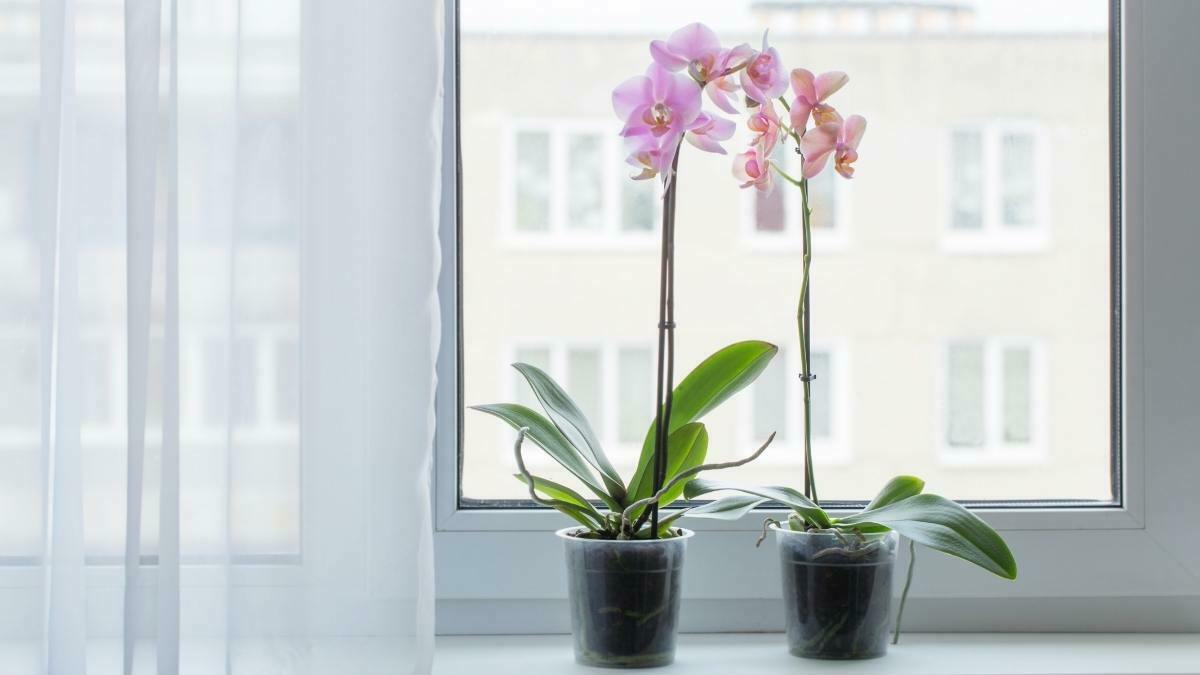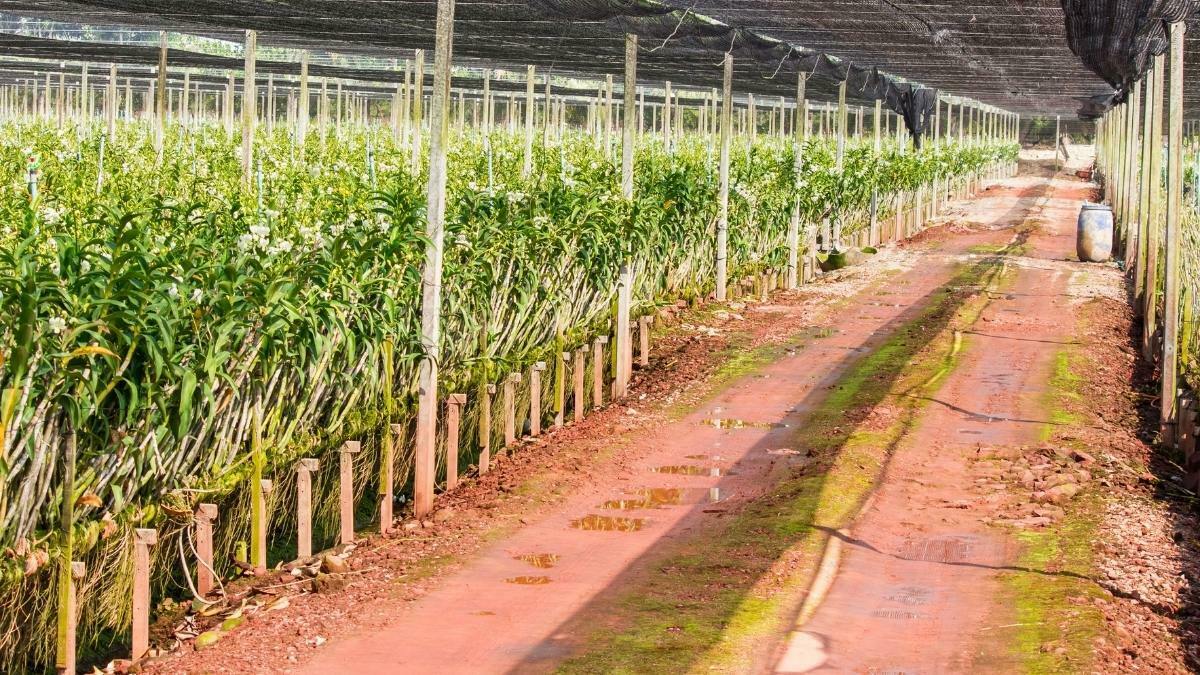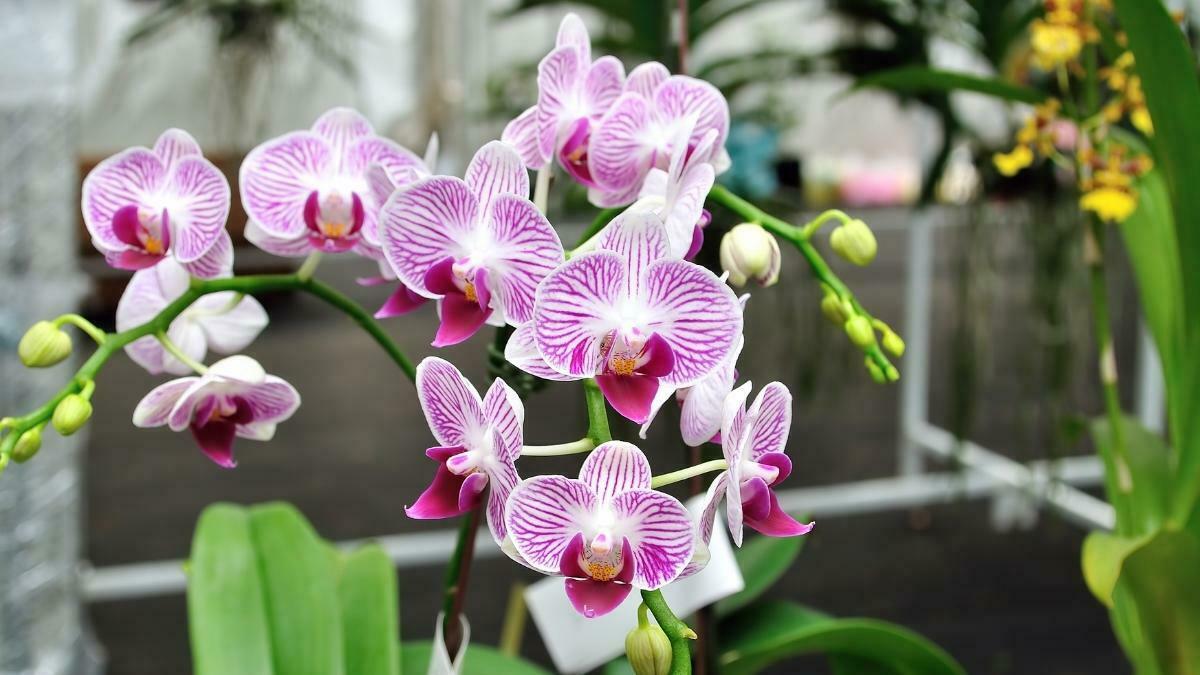It’s pretty amazing that growing orchids indoors can arouse such enormous levels of competition among orchid growers. Today, there are numerous societies of orchid growers who compete annually for the opportunity to display their precious orchids. Orchids are precious.
They belong to a family that includes from 21,000 to more than 26,000 species accepted as true orchids. Within this massive family of orchids, 880 are part of a specific genus. Cattleya and Phalaenopsis are the most commonly grown.
The essence of vanilla flavoring originates from an orchid species. Orchid plants have stems, roots, flowers, leaves, pollinate and bear fruit and seeds. The enjoyment of growing orchids is linked to the unusual beauty of these plants. Orchid hobbyists are avid about their prized plants.
Growing Orchids – The Most Popular Indoor Hobby
As with any new hobby, it’s essential to study orchids, the particular genus of choice, and the environment in which they are found. This is the clue to growing healthy orchid plants. It’s important to learn how to grow orchids indoors since these are indoor plants.
Humidity levels in a home and room temperatures play significant roles in the survival of orchids grown indoors. Another source of information is found at houseplants.about.com.
Without adequate warmth and moisture, orchids may not bloom. There’s a technique to learn how to make orchids bloom profusely. It’s constant, daily, vigilance and attention other plants may not need.
The delicate nature of orchids makes this plant particularly sensitive. However, orchids remain in the stage of pollination for periods longer than most other plants. Certain orchid species self-pollinate.
Those that don’t become immensely fertile and produce thousands of ovules. A natural pollinator can fertilize these to produce more plants or by specific practiced cultivation techniques.
Slipper orchids, for example, can self-pollinate. Vanda, Dendrobium, and Phalaenopsis are other orchids that produce offshoots from a single node in the stem. These species allow orchid lovers to grow orchids indoors and propagate.
This is the reason it’s so important to understand orchid propagation. When propagation is fully understood, it’s easier to learn how to make orchids bloom indoors.

Orchid Gardeners Enjoy the Rewards
The more orchid gardeners know about orchids, the more likely they are to enjoy the rewards of the work involved in growing these hauntingly beautiful beauties. Be aware that orchids often need soil refreshment.
When an orchid seems unable to respond to standard care, it may be that the soil has become too depleted for the orchid to derive nutrients in order to flourish. Orchids do tend to engorge soil nutrients in ways other indoor plants don’t. Proper nourishment is a major factor in the successful growth and maintenance of orchids.
Prized Blooms Need Special Care
Be willing to exhaust all everyday gardening efforts for these prized blooms. Water and soil are two essential elements upon which a delicate orchid plant depends most. Water should be room temperature to warm to avoid cold water shock.
The season of the year also plays a prominent role in watering orchid plants. For example, hot, dry summer will naturally require orchid plants to be watered more often. In winter, spring, and fall, watering may be required from five days to two weeks, depending on the species of orchid.
The best tip for watering orchids is to ensure they are never over-watered. Unlike other plants, orchid roots need a certain amount of air to survive. This is natural to their original growing environment.

When to Repot Orchids
Repotting an orchid plant is done more frequently. The reason is that orchids can’t tolerate depleted soil. Be prepared to repotting orchids to keep a better eye on their roots’ condition and protect it from broken roots that want to climb over the edge of the pot.
It should definitely be repotted when an insect infestation endangers the plant’s life and keeps the infestation from spreading to other orchids in a collection.
A new orchid plant should be repotted once the first blooms have ceased to produce. The pot size and potting medium for orchids are also essential items to consider. Orchids generally do not require very large pots.
Most are happiest with tapered pots that allow their roots to stretch and grow. This size pot will also discourage roots from growing over the side of the pot.
You might also like this: Growing and planting sweet peas
The potting medium is important. Orchid growers often rely on sphagnum moss, fir, bark, or coconut mixes for orchid mediums. If in doubt about the medium, check with the source from whom the orchid plant was purchased.
Take the time to repot regularly and to study the roots. The roots of orchid plants are the most reliable way to know whether the plant is declining or flourishing.
How Much Water is Too Much?
Orchid watering is necessary to keep the plant vital, vibrant, and vigorously growing. Consider the environment in which orchids normally are found. Try to adapt the watering to the same type of environment. This will depend on the particular species in the collection.
Orchids thrive best in tropically humid climates. Therefore, it’s crucial to synchronize the amount of water and watering times to the same natural plant environment. Unfortunately, over-watering can occur first in the roots before the visible signs reach the blooms.
Change out the medium often, repot orchids as needed, and water only as directed. Like other rare species of indoor plants, orchids tend to appear dry around the top base of the plant even though the roots have become damaged from too much water. This is one of the signs of root rot.
When replacing the medium, ensure that it isn’t packed into the pot too tightly. Packed medium creates a barrier to proper drainage. It’s a good idea to learn the different types of medium best suited for various species of orchids. Check to see if the container in which the orchid is growing allows for sufficient drainage.
Give Your Orchids Humidity, Light, and Air
One of the best ways to provide the much-needed humidity orchids thrive is an orchid humidity tray. This implement looks like a large tray with a fitted grate. These are available with single or double grates.
They provide a balanced amount of humidity for orchid plants. Location is everything for orchid growth. A sunny window may provide sunlight. However, orchids require generous amounts of light. Invest in plant track lighting if the light is insufficient. Oxygen in the air is one of the nutrients that create beautiful orchid plants.
When locating orchids in a room, be sure air is well circulated. Invest in a circulating fan if this is a problem. Many orchid growers like to make use of the steam after a shower by placing their orchid plants in the tub.
Tools of the Orchid Growers Trade
The most important tool for orchid growers is the proper pot. Today, specially designed pots are available that provide plenty of growing room for roots and stems. These are available in a wide range of colors and also in sturdy, clear plastic.
Before purchasing orchid pots, check the number of drainage holes. Orchid pots have drainage holes located on the sides and bottom of pots, unlike other plant pots. There are also special orchid fertilizers available. F
ollow the directions carefully when fertilizing orchids. Too much can be fatal, while too little may be ineffective. Some orchid growers prefer to use a gentle moisturizing mist. For this, purchase a water mister with a fine mist spray.
You might also like this: How to Grow Perennial Anemone Flowers Successfully
Some of the most critical points to remember about growing orchids include:
- Generous amounts of light, air, and water
- Repotting is needed regularly
- Study the best medium for each species in a collection
- Watch for root rot
- Avoid overwatering
- Provide balanced humidity levels
- Purchase orchid pots explicitly designed for orchids
- Ensure proper drainage
Sensitive Orchids Need TLC
There’s no doubt that the rewards of growing orchids far outweigh the time and care involved. Orchids in a home offer a sense of elegance few other indoor plants can match. Orchids may be the most sensitive indoor plants to grow.
This is why they need tender loving care from their owners. Orchid growers maintain a somewhat ritualized pattern of respect for their orchid collections. Some are lucky enough to build a unique greenhouse to display their rarest, most beautiful orchids.
It’s pretty easy to create a mini-greenhouse indoors with a bit of planning and design. Choose a room with lots of sunny, open space that’s protected from drafts.
Create a mini-greenhouse frame from a few simple metal rods and a wooden base. Then, top the frame with clear plastic sheeting long and wide enough to be attached to the base and allow for a flap opening.
The plastic sheeting should be perforated to let air in and copious amounts of sunlight filter through. Place humidity trays on the base and add orchids. Place the base atop a pedestal for single orchid plants or stand and follow the rest of the instructions.


